Oasis in the oil industry
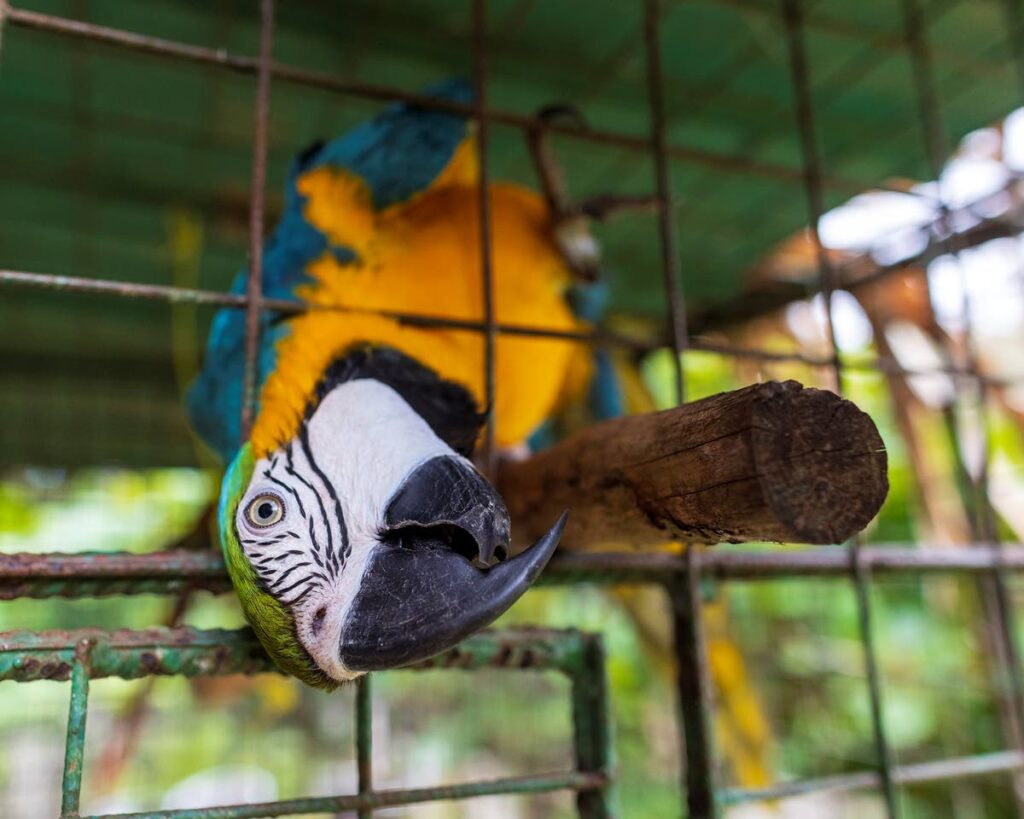
Joanne Husain visits the Pointe-a-Pierre Wildfowl Trust, and encourages schools and families to enter this classroom in nature on the edge of Trinidad and Tobago’s 100-year-old refinery.
Ducks steadfastly preening at the water’s edge are momentarily interrupted by an aureate feathery flash. Three blue-and-yellow macaws bank, announcing their arrival with cacophonous cries before settling in a mahogany grove. A serpentine figure emerges from the lotus-laden pond, but it possesses a dagger-like beak and not a forked tongue. Poui and immortelle blooms scattered like confetti beckon a celebration of our natural heritage in the most unusual of places – a once roaring but now semi-defunct oil refinery. This is the Pointe-a-Pierre (PaP) Wildfowl Trust, an organisation that has been at the forefront of conservation and environmental education efforts in TT for over 50 years.

Jaleen West, senior education officer and supervisor, guides a nature walk around the Trust’s main pond, sharing some important context. The PaP Wildfowl Trust is a national, non-profit, environmental, non-government, membership organisation with a conservation and education site situated within a petrochemical complex on Trinidad’s west coast. The protected area presently encompasses 74 acres of land, two reservoirs and three nature trails. It was founded in 1966 by Richard S “Dick” Dean and John Cambridge due to the rampant habitat destruction and hunting of local waterfowl. Molly Gaskin, environmental activist, has been the president of the PaP Wildfowl Trust since 1981. Her unwavering commitment to the protection of our wild spaces and all its inhabitants has been the guiding light for the Trust’s many achievements over the years. She is assisted by the dedicated expertise of vice-president, Karilyn Shephard. Together, they dutifully continue their day-to-day involvement with all aspects of the Trust.
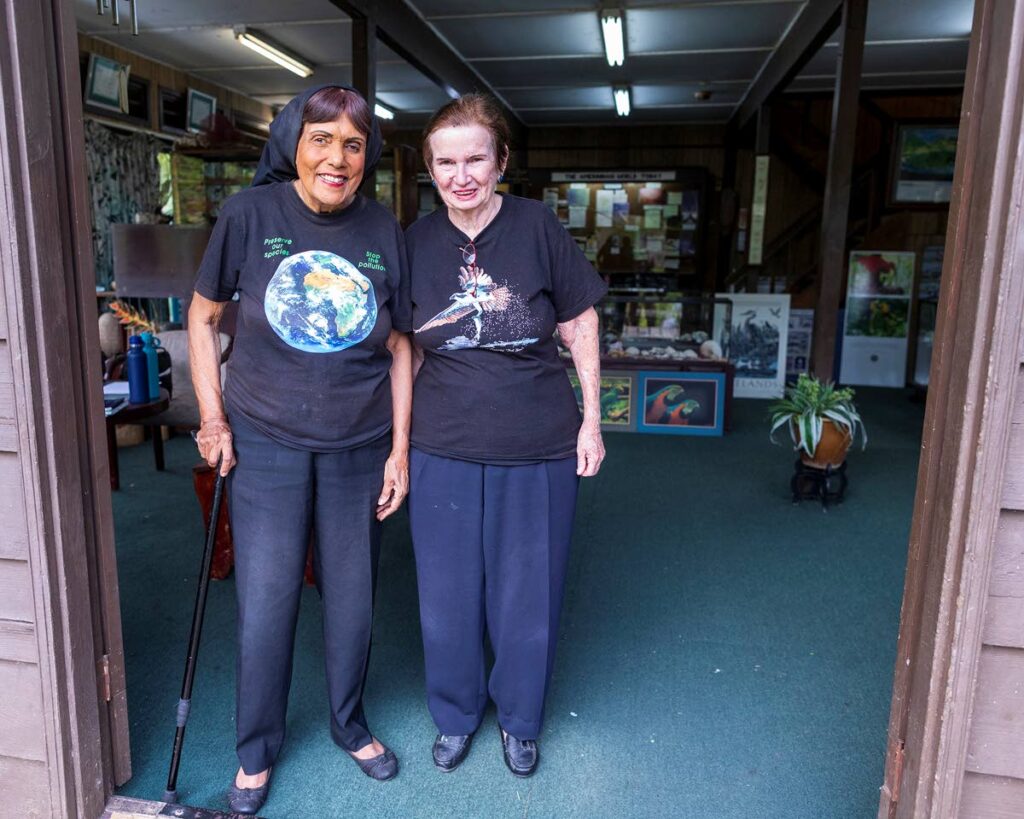
Faraaz Abdool
The Trust is well-known for its successful avicultural re-introduction programme. West identifies the five duck species on the pond and in the surrounding aviaries that are carefully bred: black-bellied whistling-duck, fulvous whistling-duck, white-faced whistling-duck, white-cheeked pintail and Muscovy duck. These birds are released into protected wetland areas, where they can thrive and contribute to the local ecosystem. Breeding and release of scarlet ibis and blue-and-yellow macaw have also been successful. Many wild birds frequent the Trust and over 100 species have been sighted here. kingfishers, tanagers and thrushes flit about the trees. jacanas and gallinules tread lightly on lily pads. The pond, while man-made, is healthy and teeming with life.
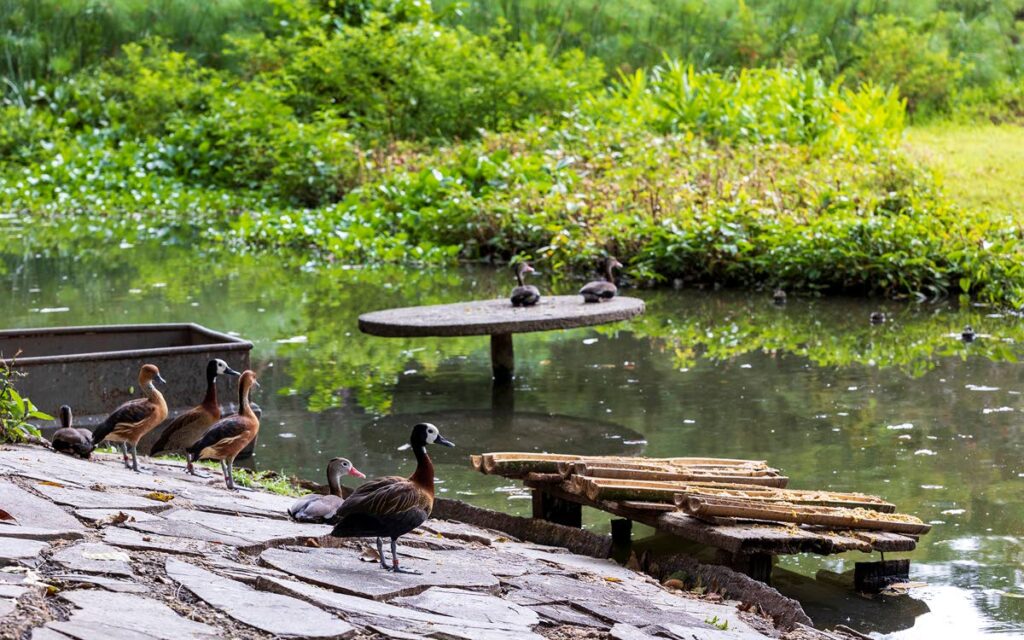
Faraaz Abdool
As the nature walk continues, West draws attention to the vegetation. Large trees stand like sentries around the pond. She chuckles, “It’s easy to forget what the world is sometimes like outside of here.” The tranquillity and beauty of the space are apparent. Fruiting, flowering and timber trees, along with medicinal plants have been strategically planted throughout the Trust’s grounds. As she relates how plants and trees improve water and air quality, act as a carbon sink, enhance soil health and help the biodiversity to flourish, she begins to touch on the importance of linkages – a concept that underscores the work of the Trust.
It is evident that environmental education is at the heart of the Trust’s work. West emphatically states, “You can’t have conservation without education. They must go hand in hand if we hope to bring about change.” It is an inextricable link she has continually experienced during her almost nine years of working at the PaP Wildfowl Trust. Gaskin has transferred this knowledge through her pioneering work in environmental education. Guided nature walks are intended to edify visitors about all aspects of our natural environment and the interconnectedness of life.
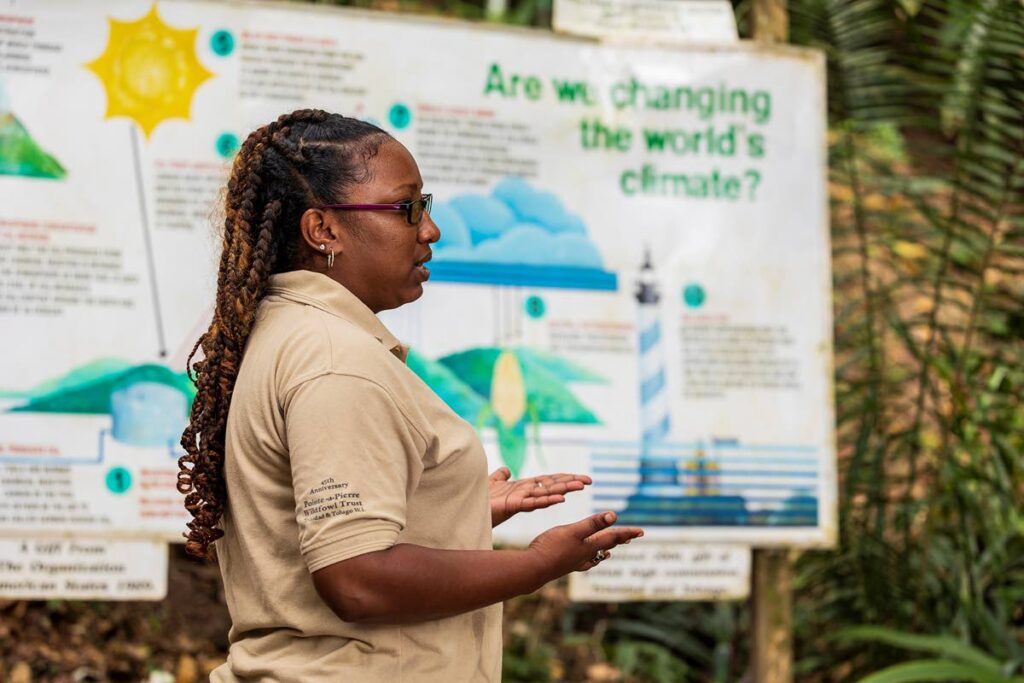
Faraaz Abdool
The Trust also offers a range of general and tailored programmes and educational resources, including publications, lesson plans, audio-visual presentations, and field trips. These resources are designed to equip educators and engage students in hands-on learning, helping them to develop a deeper understanding of the value of biodiversity and the need to protect it. From sensory nature immersion for pre-schoolers, to the SBA student, to the undergraduate conducting sampling, the lessons of the PaP Wildfowl Trust are invaluable “out of the classroom” resources.
While most of the visitors to the Trust are students, there are many family, religious and corporate groups who visit. Most importantly, special-needs individuals benefit from the well-constructed walkway for the differently-abled – a first for a nature site in this country. More and more, people need spaces like the Trust to reflect and de-stress. Along the accessible walkway, the beauty of the flower-framed pond unfolds. There are comfortable benches where visitors may sit and enjoy what nature has to offer. At the intersection of conservation and education, all visitors to the Trust can enjoy a holistic and therapeutic experience.
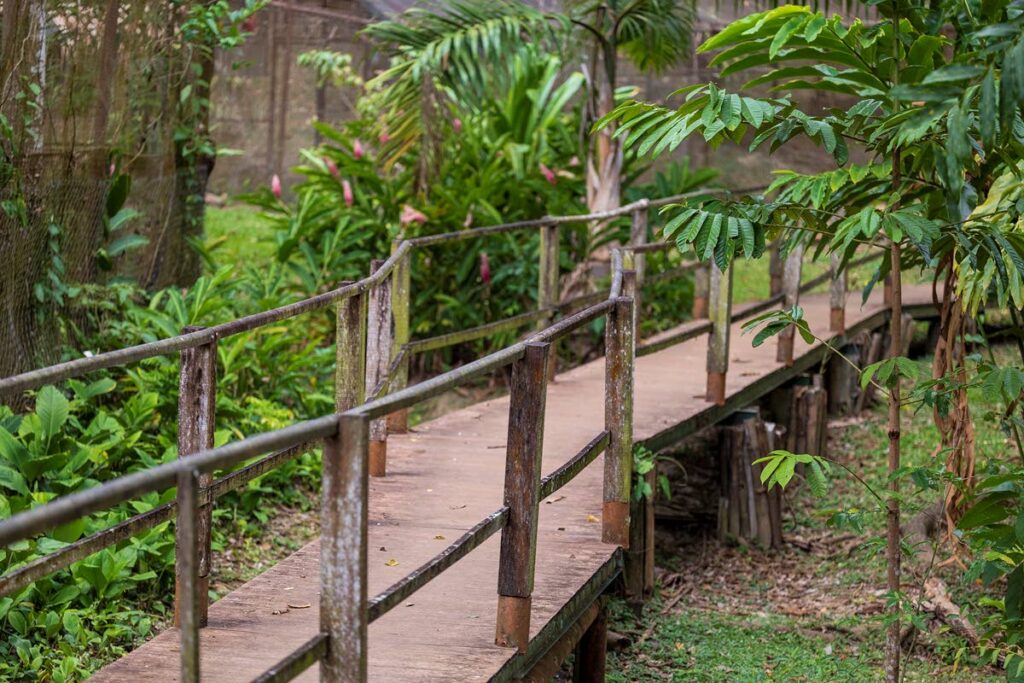
Faraaz Abdool
As the world transitions out of the pandemic, there are plans to restart the Trust’s outreach programmes, visiting schools and other groups with messages of environmental awareness and sustainability. West asserts that Trinbagonians need to strengthen their connection with the environment: “You have to know your home before you can go anywhere else.” This ties into the motto of the Trust: To know is to love, to love is to preserve.
At the main building, the Trust’s learning centre, there is a fascinating collection of shells and indigenous artefacts, along with publications and souvenirs. Gaskin and Shephard, leading ladies of TT’s environmental movement, conclude the tour at the learning centre chronicling some of the Trust’s achievements, many of which were firsts. The list is long, but note-worthy are the first Sea Turtle Recovery Plan for TT in 1983 (it’s not only about the birds), the introduction of education on climate change in 1989 to school and community groups, and successfully lobbying the government in 1993 to accede to the Ramsar Convention.
Visits to the PaP Wildfowl Trust are strictly by appointment with tours conducted twice daily. The Trust’s dedicated team of staff and volunteers, strong partner network, and the support of local communities, provide a beacon of hope for appreciation of nature and willingness to engage environmental issues. Its commitment to conservation and education serves as an inspiration, and a reminder of the crucial role that we must all play in protecting our planet's natural balance.


Comments
"Oasis in the oil industry"